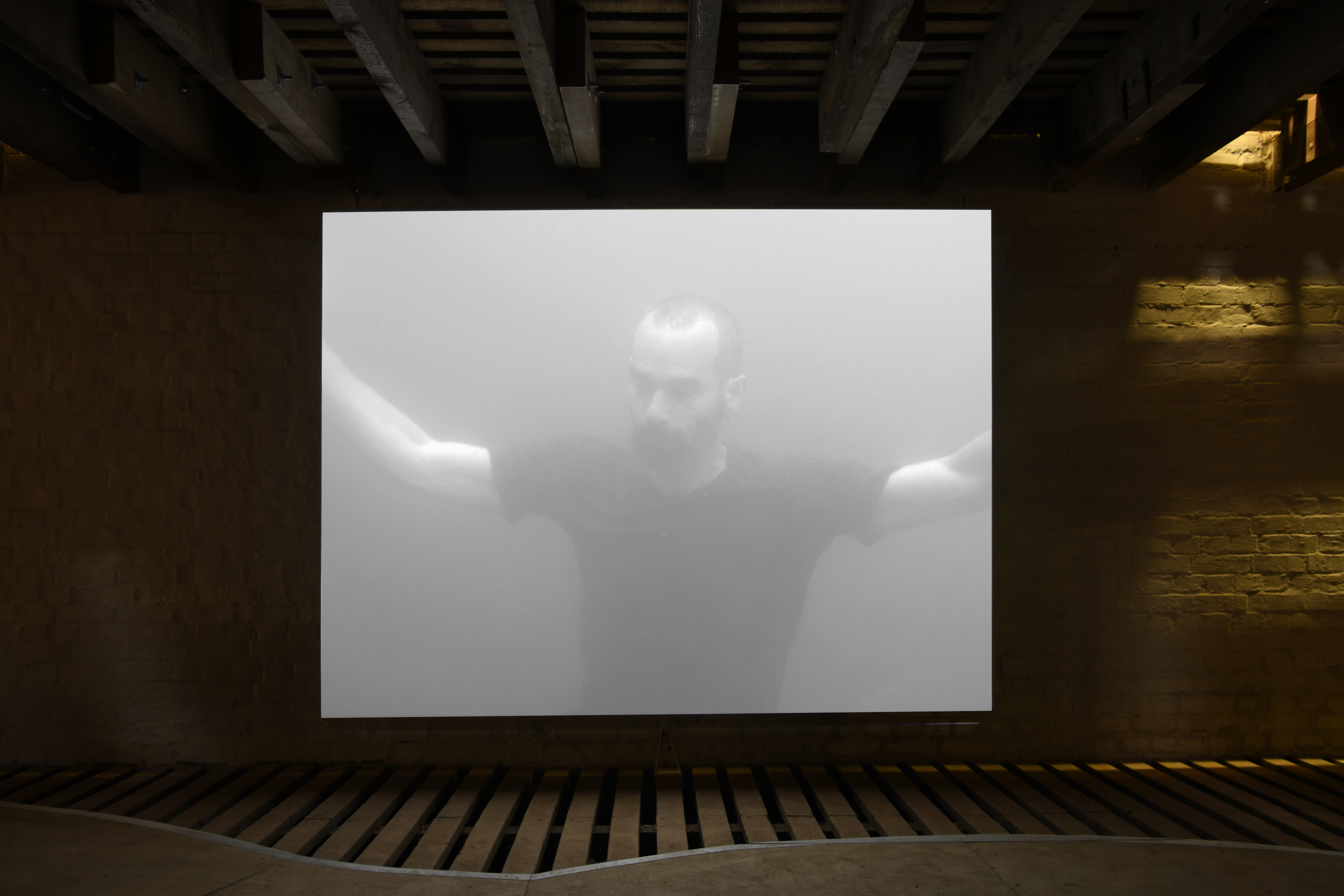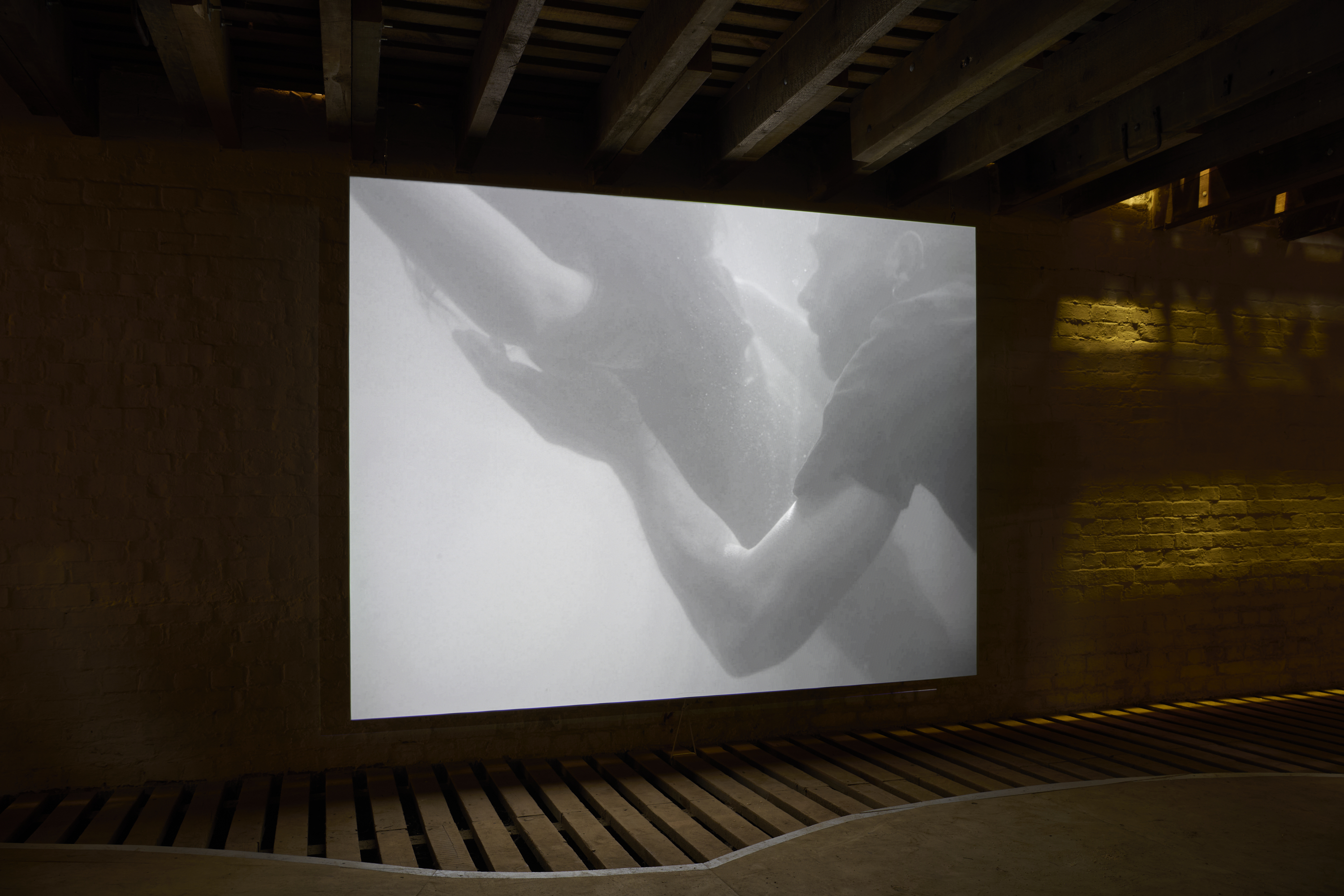
locusts, installation view, The Brickworks Museum, Southampton, UK 18.07-31.10.2024
locusts, 2024
film installation, 4K film with sound, screen dimensions variable, 6’52”, black and white, aspect ratio 4:3, lopped, DOP: Rosie ed.3+2AP
an Imperial War Museum 14-18 NOW Legacy Fund commission in partnership with Brickworks Museum
written, directed and produced by Grzegorz Stefański, performers Amaya Ash Lopez de la Nieta, Ben Ash, voiceover Josephine Chalmers, David Hutchings, producer Farida A-Latif, cinematographer Rosie Taylor, original music & sound design Cal Swingler, Matt Mullen, set design by E Zhang, costume design by Jana Zornik, 1st assistant camera Lucie Seymour, Max-Bent Marshall, 2nd assistant camera Zoé Fayaud, gaffer Vojta Stanek, edited by Rosie Taylor, Grzegorz Stefański, colour grade by Rosie Taylor, transport captain James Saunders, location manager Mike Glynn, movement consultant Claire Loussouarn, acting consultant Tallulah Haddon, BTS Zoé Fayaud, ceramicist Lucy Rutter, technical asisstance Andy Elford, Daniel Hughes,
camera Panavision lighting Panalux
special thanks Andrew Alexander, Patrick Matterson, Kieran Grewal, Rosie Buckley, Chris Rawcliffe, Mateusz Garapich Marti Guiver Michał Garapich Katarzyna Depta-Garapich, Tim Swingler, Marcin Lewandowski, Uma Laylyn
As an artist whose practice frequently incorporates choreography, Stefański has created an 7-minute film that provides an important voice to communities that have been directly affected by conflict through the intimate performances of two participants – a father and a daughter. Throughout the work, we encounter these two characters locked in intimate gestures, actions, and stances: sleeping, dreaming, holding, supporting, hiding, swimming, drowning, and building. In tandem with their physical movements, fragments of recorded testimonies from local residents are vocalised through lip synchronisations. In this, we witness the surreal activation of past recollections as they are re-enacted in the present. These words, often poignant in tone and content, become disembodied from their speakers and conjoined with the cathartic energy expressed by the movements of otherwise mute performers. Stefański’s decision to work with a father and daughter for this work perhaps speaks to the ability of trauma to be passed on to later generations, be it through storytelling, memory, or more physiological manifestations. Notably, it is the daughter rather than the father who vocalises the testimonies throughout the film, which reinforces the potential of ancestral imprinting across time. One of the film’s most striking scenes is captured underwater, where we see these two bodies swimming towards one another, holding and supporting the other in an attempt to move towards the dappling light of the water’s surface. The quality of water and what it engenders – slow, thick movements, fragmented sounds, and blurred perception – is here an apt visual metaphor for the delicate and fragile nature of trauma and the myriad ways that memories can rise to the surface of consciousness. (Joseph Constable)

locusts, installation view, The Brickworks Museum, Southampton, UK 18.07-31.10.2024
